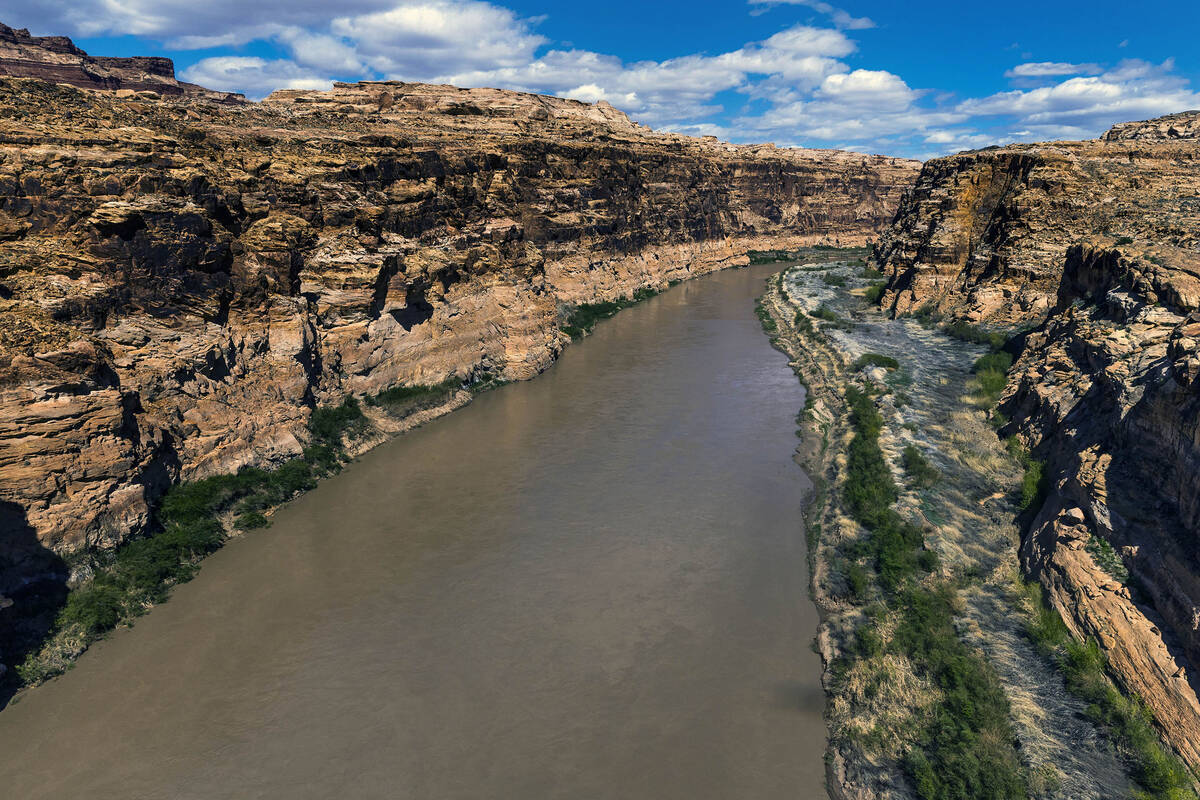COMMENTARY:
Flowing across nearly 1,500 miles, two countries, 30 tribal nations and seven states, the Colorado River is an indispensable natural resource. It supports agricultural communities and businesses and provides carbon-free, renewable hydropower to cities across the West. Plant and animal life is sustained at every bend and river mile.
As a Westerner whose family calls the Lower Basin home, I know the importance of the mighty Colorado River and what makes it so special. I also know firsthand the risks that the river is facing — and the cost of inaction. One need only visit the shores of Lake Powell or overlook the canyon walls of Lake Mead to clearly see the impact of the drought crisis on the river system.
We are seeing the lowest water levels across the Colorado River Basin in the river’s recorded history. While high snowpack and precipitation has given us a brief reprieve, the overall trend remains — changing hydrology and climate change is fueling what has now become one of the worst megadrought in 1,200 years.
Under a continuation of this overall hydrologic trend and absent a change in water use patterns, major Colorado River reservoirs could continue to decline to critical elevations — threatening essential water supplies across nine states in the United States and Mexico.
Recognizing the urgency of this crisis, the Biden administration has made tremendous progress in helping protect the stability and sustainability of the Colorado River now and into the future. We’re working collaboratively and transparently with the seven Basin states, tribes, water managers, farmers, irrigators and other interests to reach consensus proposals on what current and future water conservation efforts can and will look like. We’ve deployed billions of dollars in historic funding through President Joe Biden’s Investing in America agenda to improve water infrastructure and enhance the efficiency of water use. And we’ve begun talks on what long-term system durability looks like, not just for the next few years, but through the next decade and beyond.
Thanks to the president’s Bipartisan Infrastructure Law and Inflation Reduction Act, the Department of the Interior’s Bureau of Reclamation has $13 billion to make long-overdue infrastructure improvements across the West, including for water conservation, water reclamation and reuse, water storage and conveyance, desalination and ecosystem restoration projects. To date, we’ve deployed $2.5 billion for 375 projects that will help conserve water, including in the Colorado River basin.
As we deploy these historic resources, we are approaching this crisis on two tracks. First, we are working to protect the Colorado River system through 2026 — when the current guidelines that govern operations expire. To do so, we released a proposal to protect the critical infrastructure at Glen Canyon Dam and Hoover Dam by conserving up to 3 million acre-feet of water by 2026. Thanks to an historic agreement by Arizona, California and Nevada — and a wet and snowy winter — our analysis shows we have staved off the immediate possibility of the Colorado River system crashing.
We are also evaluating projects that will build long-term system efficiency improvements into the system — such as lining canals, restoring aquatic ecosystems and increasing water efficiency for crops. These investments will not only enhance the system now but will also be incorporated into our long-term planning — making our path forward stronger and more sustainable.
Already, these conservation efforts, and wetter-than-expected conditions across the basin, have conserved more water in Lake Mead this year than over the past 30 years. Lake Powell’s water levels have rebound by 44 feet this year. The collaboration across the basin has yielded an unprecedented level of conservation never seen before.
At the same time, we also initiated our process to develop the next iteration of guidelines and strategies governing the Colorado River. These new guidelines — which will take effect in 2027 and guide the next period of river operations — govern all aspects of the Colorado, including how much water cities can use to keep the taps on and how much farmers can use to grow their crops. Given their outsized importance — these new guidelines will be in effect over the next several decades — they will be developed collaboratively, transparently and inclusively, with input from states, tribes and other interests that live around the basin.
As someone with my own relationship with the Colorado River, it has been my great privilege to meet with partners and communities across the West to see what the river means to them. From walking the farm fields in the Yuma, Arizona, and Coachella and Imperial valleys, to standing on the riverbanks with tribal leaders, I have seen firsthand that we all are united in our efforts to protect the river now and into the future. Together, we know that successful protection of the Colorado River isn’t just for the West; it is imperative for the entire country. From the fruit and vegetables we eat, to the electricity that powers our homes, to the climate resiliency against extreme heat and wildland fires, ensuring the stability of the Colorado River is essential for communities across the country.
For over a century, the Bureau of Reclamation has led with solutions grounded in partnership and collaboration. These principles will continue to guide our work as we bring every tool and every resource to bear to protect the stability and sustainability of the Colorado River system. The future of the American West depends on it.
Camille Calimlim Touton is a water policy adviser who serves as the commissioner of the U.S. Bureau of Reclamation in the Biden administration.

















